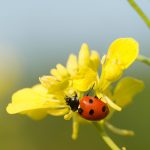
Press release
Three percent of Earth’s water is fresh, and over two-thirds of that tiny amount is unavailable or polluted. The entire human race relies on the remaining 0.5 percent to survive.
But water distribution is uneven—few places prove this point as much as Africa does. Cameroon receives an average of 1,016 cm of rainfall yearly, while parts of Sudan get less than 2.5 mm.
South Africa sits somewhere in the middle, yet our uneven rainfall areas and dispersion zones make SA a very water-stressed nation. Fortunately, there is much we can do to improve water availability, and we can draw on great examples from the rest of the continent.
“Africa is a great place to study how we can manage water for the future,” says Chetan Mistry, Xylem Africa’s Strategy and Marketing Manager. “Just as with energy and technology, Africa’s unique challenges also prompt us to leapfrog forward and create innovative solutions. African nations can look to each other and cooperate to create better water conservation, and I believe that one day we will help the rest of the world do the same.”
What are some of those ideas that we can use in SA right now? Here are some examples and how three African nations use them to good effect.
Solar Desalination
Desalination is the process of extracting fresh water from seawater. African nations are among the most prolific adopters of this technology. Egypt and Namibia are desalination leaders, especially when it comes to the use of solar desalination. Namibia introduced a containerised system in 2019 where every unit can produce 3,500 litres of water per hour from seawater without an external power source.
Drip and Smart Irrigation
Agriculture is the biggest consumer of water by sector, and many farmers rely on rainfall and spray irrigation to nourish their crops. These methods are very inefficient, prompting the growing use of drip irrigation. Namibian farmers are starting to use a combination of nuclear techniques and small-scale drip irrigation to water their fields. Drip irrigation is also becoming more common among farmers in Botswana and Egypt. Smart irrigation, the combination of irrigation technologies, is also gaining favour. Namibia today uses smart irrigation to grow blueberries, and Botswana’s green agriculture strategy leverages smart irrigation to reduce its farmers’ energy and water consumption.
Tourism
Water is essential to tourism, keeping visitors cool and refreshed and sustaining the natural spots they want to experience. Botswana, in particular, appreciates this link and promotes it as state policy. Its largest wetland, the Okavango Delta, is an excellent example of this dynamic. But it can be seen across Botswana’s dams and wetlands. Egypt has also been aggressively cleaning the Nile River to help support tourism and create jobs.
Efficient Metering
Modern civilisation is wasteful with water. Even towns and cities’ metering and billing practices leave a lot of money on the table. Egypt has been getting some of that back as it pushes to modernise its water metering and wastewater systems. Namibia is rolling out prepaid water meters to encourage better use and easier collection of utility fees.
These are just four examples of how African nations with water shortages are preserving their most valuable resource. Working directly or through partners, Xylem Africa serves the African continent and helps them select the best ways to ensure safe water for all. Through the examples of countries such as Botswana, Egypt, and Namibia, we can all solve water.
Relevant Agribook pages include “Water“, “Wetlands“, “Water storage” and “Irrigation“
Photo by Steve Harvey on Unsplash







